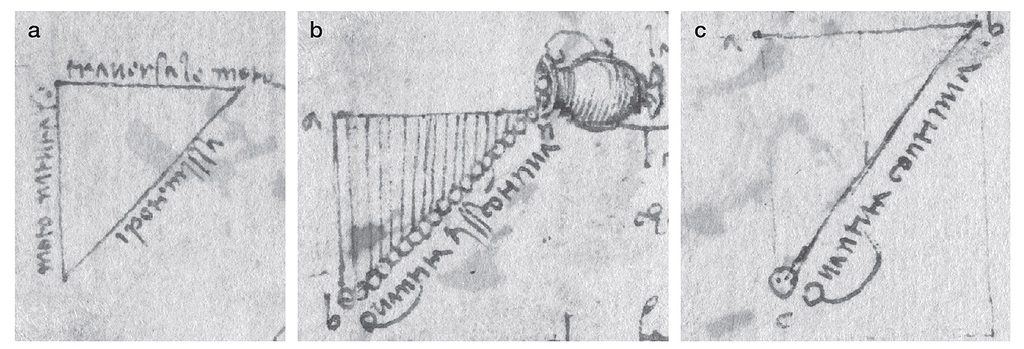Step aside Galileo and Newton — Leonardo da Vinci has done it again. Engineers at Caltech found that da Vinci, who lived from 1452 to 1519, had created experiments to demonstrate that gravity is a form of acceleration. He modeled the gravitational constant with around 97% accuracy, well ahead of the curve in exploring these concepts.

It wasn’t until 1604 when Galileo Galilei theorized that the distance covered by a falling object was proportional to the square of a time elapsed, and not until the 17th century that Isaac Newton expanded the concept to develop a law of universal gravitation. Da Vinci’s main limitation was the lack of tools for precise measurements.
Da Vinci’s experiments were first spotted by Caltech engineer Mory Gharib when working in the Codex Arundel, a set of papers written by da Vinci that cover science, art and personal topics. In 2017, Gharib was teaching a course when he noticed a series of sketches of triangles generated by sand-like particles pouring out from a jar.
Further analysis showed that da Vinci was in fact trying to study the nature of gravity and acceleration and that the triangles in his papers were his way of making a connection between gravity and acceleration. Gharib and her team described their discovery in a new paper, even recreating a modern version of da Vinci’s experiment.
“What caught my eye was when he wrote ‘Equatione di Moti’ on the hypotenuse of one of his sketched triangles—the one that was an isosceles right triangle,” Gharib, the lead author of the paper and a professor of aeronautics and medical engineering, said in a statement. “I became interested to see what Leonardo meant by that phrase.”
Looking at da Vinci’s work
Gharib joined forces with his colleagues Chris Roh, now an assistant professor at Cornell University, and Flavio Noca of the University of Applied Sciences and Arts Western Switzerland in Geneva. Noca was the one to provide translations of da Vinci’s Italian notes, written in his left-handed mirror writing that reads from right to left.
Da Vinci describes an experiment in which a water jar would be moved along a straight path parallel to the ground, dumping water or a granular material along the way. He was aware that they wouldn’t fall at a constant speed but rather would accelerate and that the material stops accelerating horizontally, as it’s no longer influenced by the jar.
If the jar moves at a constant speed, the line created by the falling material is vertical, so no triangle forms. But if it accelerates at a constant rate, the line would form a triangle. And, as da Vinci pointed out, if the jar’s motion is accelerated at the same rate that gravity accelerates the falling material, it creates an equilateral triangle.
Da Vinci was trying to mathematically describe that acceleration. But he didn’t really hit the mark, probably due to the lack of accurate timekeeping and calculus – which Newton later invented. To further explore da Vinci’s process, the researchers used computer modeling to run his experiment. This was able to prove he had made a mistake, although his understanding was fundamentally on the mark.
The researchers don’t know whether da Vinci did further experiments or probed this question more deeply. However, the fact that he was working on this problem in the early 1500s shows how far ahead his thinking was. His notebooks have all sorts of inventions that anticipate future technologies, from bicycles to a double-hulled ship.
The study was published in the journal Leonardo.
Was this helpful?



